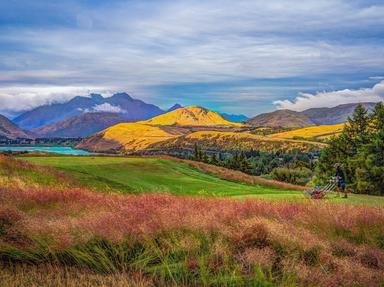Quiz Answer Key and Fun Facts
1. The town of Ophir, on the terraces above the Manuherikia Valley 20km from Alexandra, has had two names during its relatively brief existence. What was the original name?
2. The Milford Road climbs gently up the Eglinton Valley before dropping very steeply to Marion Camp in the Hollyford River valley. What is the name of the highest point of the road, where it crosses from the east coast watershed to the western side?
3. Cromwell, which is now nearly surrounded by Lake Dunstan courtesy of the Clyde Dam, used to be the place where the Kawarau and Clutha Rivers met. But it wasn't always known as Cromwell. What was it originally called?
4. John Turnbull Thomson surveyed the Maniototo area for the Otago Provincial Council between 1856 and 1858. He named many of the streams in the area, quite prosaically, after farm animals. Which of the following is NOT the name of a stream in the area?
5. Queenstown hasn't always be called Queenstown. F.W.G. Miller states that the name was chosen at a public meeting in the early 1860s. What was the settlement called prior to this?
6. What was the name of the surveyor who laid out Dunedin's basic street plan in the late 1840s?
7. The name "Otago" is a corruption of the Maori name for a village near the entrance to Otago Harbour. What is the name of that village?
8. The Arrow River gold rush only began after a small group of prospectors had been quietly making a fortune on the river in secret. Before it became Arrowtown, the settlement at the lower end of the Arrow Gorge was named after the American leader of this secretive band of miners. What was his name?
9. State Highway 85 between Palmerston and Ranfurly has an unusual name for a road. What is it?
10. Perhaps Dunedin's best-known claim to fame is that it has the steepest street in the world. While the veracity of this claim is open to question, the street itself is undoubtedly very steep. What is its name?
Source: Author
Capfka
This quiz was reviewed by FunTrivia editor
Exit10 before going online.
Any errors found in FunTrivia content are routinely corrected through our feedback system.
